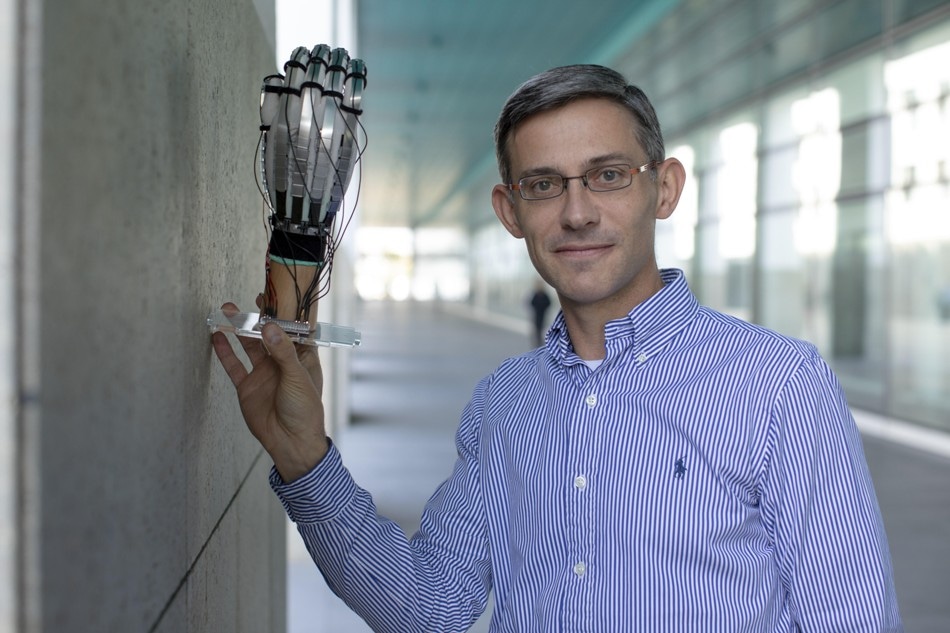Oct 16 2018
Researchers from EPFL and ETH Zurich have created an ultra-light glove — weighing less than 8 grams per finger — that enables users to feel and control virtual objects. Their system offers exceptionally realistic haptic feedback and can be battery-powered, allowing for unmatched freedom of movement.
 Herbert Shea © Marc Delachaux - 2018 EPFL
Herbert Shea © Marc Delachaux - 2018 EPFL
Engineers and software developers worldwide want to develop technology that allows users to touch, grasp and work virtual objects, and at the same time feel like they are really touching something in the real world.
Researchers at EPFL and ETH Zurich have just completed a crucial step toward this goal with their new haptic glove, which is not only lightweight — less than 8 grams per finger — but also offers feedback that is very realistic. The glove is able to produce up to 40 Newtons of holding force on each finger with just 200 Volts and only a few milliWatts of power. It also has the capacity to work on a tiny battery. That, along with the glove’s low form factor (just 2 mm thick), translates into an unparalleled level of precision and freedom of movement.
We wanted to develop a lightweight device that — unlike existing virtual-reality gloves — doesn’t require a bulky exoskeleton, pumps or very thick cables.
Herbert Shea, Head of Soft Transducers Laboratory (LMTS), EPFL
The scientists’ glove, called DextrES, has been successfully tested on volunteers in Zurich and will be showcased at the 2018 ACM Symposium on User Interface Software and Technology (UIST).
Fabric, metal strips and electricity
DextrES is composed of nylon with thin elastic metal strips running over the fingers. The strips are divided by a thin insulator. When the user’s fingers make contact with a virtual object, the controller applies a voltage difference between the metal strips making them adhere together via electrostatic attraction — this generates a braking force that blocks the thumb’s or finger’s movement. Once the voltage is turned off, the metal strips glide effortlessly and the user can once again move his fingers at will.
Tricking your brain
At present, the glove is driven by a very thin electrical cable, but thanks to the low voltage and power requirement, a very small battery could, in due course, be used instead. “The system’s low power requirement is due to the fact that it doesn’t create a movement, but blocks one”, explains Shea. The scientists also need to carry out tests to see just how closely they have to mimic real situations to give users a realistic experience.
The human sensory system is highly developed and highly complex. We have many different kinds of receptors at a very high density in the joints of our fingers and embedded in the skin. As a result, rendering realistic feedback when interacting with virtual objects is a very demanding problem and is currently unsolved. Our work goes one step in this direction, focusing particularly on kinesthetic feedback.
Otmar Hilliges, Head of the Advanced Interactive Technologies Lab, ETH Zurich
In this joint research project, the hardware was put together by EPFL at its Microcity campus in Neuchâtel, and the virtual reality system was developed by ETH Zurich, which also conducted the user tests.
“Our partnership with the EPFL lab is a very good match. It allows us to tackle some of the longstanding challenges in virtual reality at a pace and depth that would otherwise not be possible,” adds Hilliges.
The following step will be to upgrade the device and apply it to other parts of the body using conductive fabric. “Gamers are currently the biggest market, but there are many other potential applications – especially in healthcare, such as for training surgeons. The technology could also be applied in augmented reality,” says Shea.